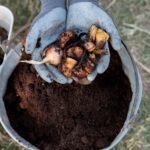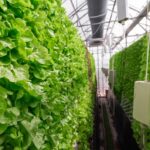Dairy farming plays a significant role in South Africa’s agricultural sector, providing essential dairy products for local consumption and export. To meet the growing demand for milk and dairy products, farmers need to adopt innovative techniques and best practices to optimize productivity and efficiency. Here are ten techniques South African farmers can practice to boost dairy production:
Optimal Nutrition Management:
- Ensure dairy cattle receive a balanced diet rich in energy, protein, vitamins, and minerals.
- Work with a nutritionist to formulate customized rations based on the cow’s nutritional requirements at different stages of lactation and production goals.
- Incorporate high-quality forages, grains, and protein supplements into the diet to support milk production and cow health.
Genetic Selection and Breeding:
- Select and breed dairy cattle with superior genetics for milk production, reproductive efficiency, and disease resistance.
- Use proven sires and genomic testing to improve the genetic merit of the herd and enhance milk yield and quality over successive generations.
Reproductive Management:
- Implement effective reproductive management practices to optimize fertility and calving intervals.
- Monitor estrus cycles, perform timely artificial insemination or natural mating, and conduct regular pregnancy checks to maximize conception rates and minimize calving intervals.
Health Monitoring and Disease Prevention:
- Implement a comprehensive herd health program to monitor cow health, prevent diseases, and minimize production losses.
- Vaccinate against common infectious diseases, practice good biosecurity measures, and provide routine veterinary care to maintain herd health and productivity.
Comfortable Housing and Facilities:
- Provide comfortable housing, proper ventilation, and adequate space for dairy cattle to rest, feed, and move freely.
- Invest in well-designed milking parlors, feeding systems, and manure management facilities to optimize cow comfort, labor efficiency, and hygiene.
Effective Milking Management:
- Follow strict milking hygiene protocols to ensure milk quality and minimize the risk of mastitis and other udder infections.
- Use automated milking systems or trained personnel to perform thorough udder preparation, gentle milking techniques, and post-milking teat disinfection.
Optimized Reproduction Programs:
- Implement synchronized breeding programs and timed artificial insemination to achieve a high conception rate and shorten calving intervals.
- Use reproductive technologies such as estrus synchronization protocols, embryo transfer, and sexed semen to enhance breeding efficiency and genetic progress.
Data-Driven Decision Making:
- Collect and analyze production data, including milk yield, composition, and somatic cell count, to identify trends, evaluate performance, and make informed management decisions.
- Use herd management software and performance monitoring tools to track individual cow performance, detect health issues, and optimize productivity.
Continuous Education and Training:
- Stay updated on the latest research, technologies, and best practices in dairy farming through ongoing education, training, and professional development.
- Attend workshops, seminars, and conferences, and network with other dairy farmers and industry experts to exchange knowledge and experiences.
Environmental Sustainability Practices:
- Implement sustainable farming practices to minimize environmental impact, conserve natural resources, and promote long-term sustainability.
- Adopt practices such as rotational grazing, nutrient management planning, and conservation tillage to improve soil health, water quality, and biodiversity on the farm.
By adopting these techniques and best practices, South African dairy farmers can enhance productivity, profitability, and sustainability in their operations. By focusing on nutrition management, genetic selection, reproductive health, facilities, milking management, data analysis, continuous education, and environmental stewardship, dairy farmers can optimize their production systems and contribute to a thriving dairy industry in South Africa.
Join 'Farmers Mag' WhatsApp Channel
Get the latest Farming news and tips delivered straight to your WhatsApp
CLICK HERE TO JOIN






